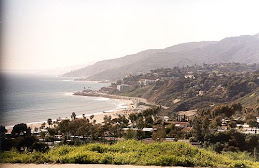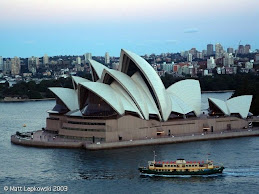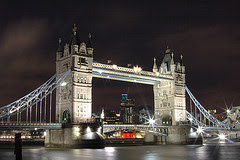http://www.southasiaanalysis.org/papers29/paper2840.html
China Unmasked – What Next?
by Bhaskar Roy
As India won the Nuclear Supplier’s Group (NSG) waiver to conduct civilian nuclear trade with other countries, there was another victory in the making on the stage in Vienna. It was the unmasking of China’s “denial and deception” strategy in conducting affairs of the state.
Multilateral negotiations are usually long drawn. There are lobbies through which forces are aligned between supporters and opponents. Partners are won or lost. All this is fair.
But what is blatantly unfair is when one party gives its word to another at the highest level and then lets it down at the last deal of hand. This is the surest way of kicking an agreement. This is the dirtiest move in international diplomacy that a major country could descend to.
Chinese Foreign Minister Yang Jiechi, in India this week for the inauguration of the Chinese Consulate General in Kolkata and also as part of high level bilateral contacts, tried desperately to defend China’s position at the NSG meeting. Mr. Yang continued to repeat one sentence only, that China had played a “constructive” role and did not oppose India. But nobody believed him, obviously.
China’s attempt to scuttle the deal at the NSG needs further elaboration. Some western diplomats attending the meeting, informed the media on conditions of anonymity that China hoped to use the last three opponents of the agreement namely New Zealand, Austria and Ireland to kill the deal. But when these three crumbled, China, in a last desperate effort, showed its hand openly that September 5 evening.
The Chinese delegation quietly walked out of the NSG meeting around 12 midnight signaling the demise of the India specific waiver. It is not in the general realm of Chinese diplomacy to stand alone against a large international opinion. In the NSG, it has to be a consensus decision and even one abstention means the motion is defeated.
The call from US President George W. Bush and the demarche from the Indian government in the early hours of September 6 made China realize the price of scuttling the deal may be very heavy to pay. Beijing fell in line.
In India, Chinese Foreign Minister Yang sought a “face saving” exit for his country. That was given graciously from EAM Pranab Mukherjee downwards. The media did not harangue Mr.Yang, either. But for the first time, China’s high handed approach was met by India reading out the riot act, albeit politely.
China’s final position had become quite clear when the Chinese Communist Party mouthpiece, the People’s Daily of September 1 conveyed its opposition to the India waiver in a sharply worded commentary. A People’s Daily commentary supersedes whatever the Foreign Ministry says in China’s political hierarchy. The Communist Party is supreme in China.
The People’s Daily commentary stated that the India-US nuclear deal will be a “major blow to international non-proliferation regime”. For China, allowing India into the nuclear fold by the international regime has multiple implications. Notwithstanding that, a brief look at China’s proliferation activities especially when it is professing itself as an anti-proliferation Brahmin may expose its rather diabolical non-proliferation pledge.
China signed the Nuclear Non-Proliferation Treaty (NPT) in 1992. In 1991, they assured the USA they would abide by the Missile Technology Control Regime (MTCR) guide lines. While loudly touting their positions, Chinese-made nuclear capable M-11 missiles were found in Pakistan’s Sargoda airbase. In May 1990, according to western authorities like Thomas Reed and others, Pakistan’s first nuclear device made with Chinese assistance, was tested in China’s Lop Nor test site.
Throughout the 1990s till early 2004, China transferred nuclear warhead and missile technology and equipment to Pakistan. It facilitated centrifuge technology transfer from Pakistan to North Korea and Nodong missile technology and design from North Korea to Pakistan.
It has also been known that transfers between Pakistan and North Korea were carried by aircraft of “Shaheen” airlines, a subsidiary of nuclear scientist Dr.A.Q.Khan’s “Khan Research Laboratory” (KRL) in Pakistan, a nuclear weapons research establishment. These flights refueled in Chinese airports, but publicly available flight manifests did not show these flights. Intrepid western researchers have documented much of these activities.
China’s illegal nuclear and missile assistance to Pakistan has reduced to a great extent. The reason is that the Chinese have equipped Pakistan with technology and training, equipment production facilities and testing resources. As of today, it is reported by credible sources that China is helping Pakistan with improved weight-yield ration of nuclear warheads/bombs i.e. miniaturising, guidance system for missiles and telemetry among others. As always, China may deny all of the above but it has lost all credibility in non-proliferation among international institutions. That details are not revealed rests in the west’s economic and commercial dealings with China.
Relations between any two countries like China and Pakistan are legitimate. Pakistan has its own defence requirement and has sovereign right to procure military assistance from China and have any kind of alliance with China. But all such dealings must remain in the conventional military area as per international non-proliferation regimes. China has acceded to all international non-proliferation regimes but, at the same time, violated all of them.
At the NSG meeting, China had one fall-back compromise to offer. That is, Pakistan must be given the same exemption that India was being given. A preposterous suggestion on all counts, given Pakistan’s proliferation record, but China was serious. This position was not new.
China has always worked to maintain a military parity between India and Pakistan. Viewed from the strategic angle of cold war years, Pakistan became China’s nuclear weapons base in South Asia threatening India, much in the same way European countries like West Germany were nuclear forward bases of the US and NATO against the Soviet union during the cold war. China’s Pakistan base is being strengthened both through modernized strategic arsenal and highly improved conventional systems especially JF-17 joint fighter aircraft – the developing world’s F-16.
Pakistan’s newly elected President Asif Ali Zardari is scheduled to visit China next week. True to tradition, Zardari will be making China his first overseas destination as President of Pakistan. Media reports from Pakistan say an MoU may be signed between the two sides during this visit on a nuclear cooperation arrangement much on the lines of the US-India deal. This, of course, brings up the question of NPT.
Pakistan is not a signatory to the NPT. Therefore, China cannot transfer technology on the trigger list and other such technologies to Pakistan under NSG rules. Clandestine transfer apart, is China moving to persuade Pakistan to sign the NPT to create a new issue to try and stonewall India in due course? After all, Pakistan’s nuclear policy is guided by China.
While not much is clear yet, a move to bring Pakistan to a new non-proliferation level cannot be ruled out. The US and most other NSG members may not agree to give Pakistan the same status as India’s. But if Islamabad opts to sign the NPT and the Comprehensive Test Ban Treaty (CTBT), China could launch a new fusillade against India in the international non-proliferation club. This scenario cannot be ruled out as a midsummer night’s dream. Experts need to dwell on this sooner rather than later. This signal can, perhaps, be read in Prof. Shen Dingli’s observation to the official China Daily of September 9. Pro. Shen, Director of the Fudan (Shanghai) University is American Studies Centre, said that steps should be taken to update some of the NPT regulations and there should be more stringent inspections (read intrusive) on non-NSG members for civilian use of nuclear energy. Shen Dingli is an influential member of the Chinese government’s foreign policy core group.
Non-proliferation crusaders like Daryl Kimball have lately made statements which defy intellectual decency. Kimball has publicly stated that the Indian Prime Minister “lied” to his Parliament and the people of India on the Indo-US nuclear deal. He has accused India of having a history of proliferation, while almost the entire world has saluted India’s non-proliferation record. Surprisingly, this anti-proliferation knight has little to say about the well known proliferation records of China and Pakistan. This is still a mystery. It is, however, well known that lobbyists need financial sustenance and speak on dictated lines. More need not be said.
What will be China’s next move? Most probably, as Chairman Mao Zedong wrote “Two steps forward, one step backward”, which means only tactical retreat. India must ready itself for a new tango with China. The Indian government has decided to move on. Geography has blessed or condemned the two countries to share a 4000 kms border, but with disputes. But the two also need each other. India is no longer a push over.
The People’s Republic of China has lost a lot of points in the trust department among the Indian people. So have China’s supporters in India.
(The author is an eminent China analyst with many years of experience of study on the developments in China. He can be reached at grouchohart@yahoo.com)
skip to main |
skip to sidebar













Don't put the key to your
happiness
in someone else's pocket.
INTERFAITH

Informative Links
Bharat Raagini
Incredible : INDIA
Dil Hai Hindustani
Aana Hai Tou Aa
Jagte Raho
Behti Hai Ganga
Insaaf Ka Mandir
Los Angeles,USA

Sydney, AUSTRALIA

Himalayas, India

Swiss Alps

Eiffel Tower,Paris

Tower Bridge, London

Grand Place, Brussels

SUNRISE

Machu Picchu, PERU

Venice

Modern Art

Pencil sketch

Think about this;
Don't put the key to your
happiness
in someone else's pocket.